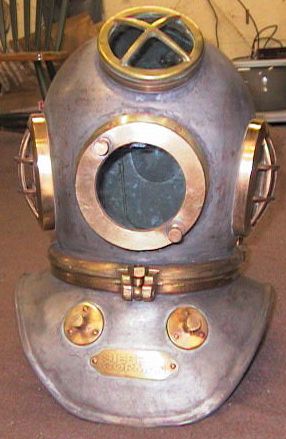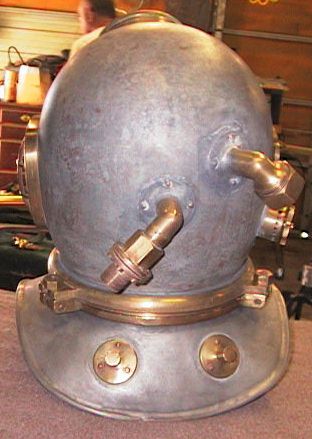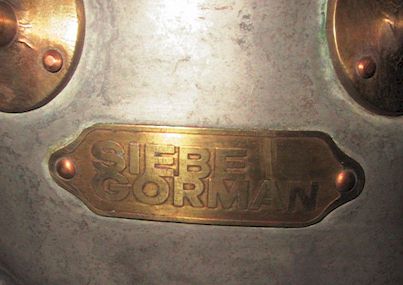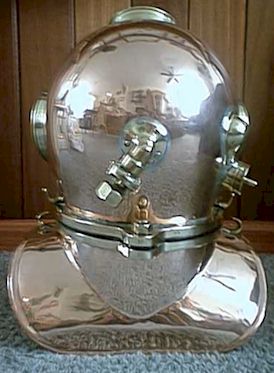
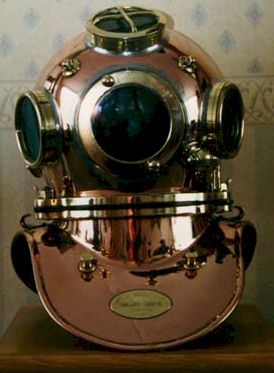
This is what
3 bolt helmets looked like when they left the factory.
One of viewers mailed us these pictures.
That's what we call MINT condition...
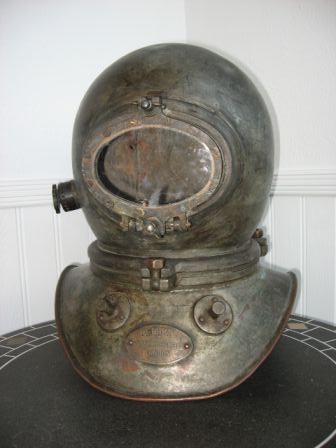
Siebe Gorman
realised the potential for the 3 bolt helmet but as sales were not very
high they designed a 3 bolt lightweight helmet and suit known
by divers as the 'Harbour Hat' the helmet was based on the design of the
Mine Recovery Diving Apparatus. It had an oval front window and a top
window.
The window was hinged downwards so always connected to the helmet and
not easily lost. The helmet could be equipped with a communications
system
and a spitcock. The helmet was still connected to the breastplate with 3
bolts but in this design they too were hinged and the nuts did not need
to be removed
from the breastplate to secure the bonnet. The rubber neck seal was
different too. It was made from a soft flexible rubber material similar
to latex which is used
now on dry suits . This rubber was much heavier and more robust than the
latex of today. It had a ring of rubber which was located in a groove on
the breastplate
This was trapped between the breastplate and the bonnet thus creating a
watertight seal. The main advantage of this was that it was much easier
to get into.
The whole Harbour outfit was lighter and often the suits had Wellington
style boots on the feet so were ideally suited to shallow water or
harbour use.
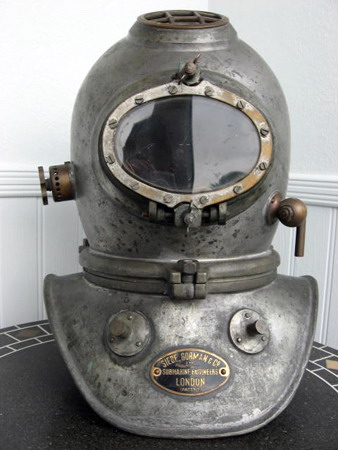
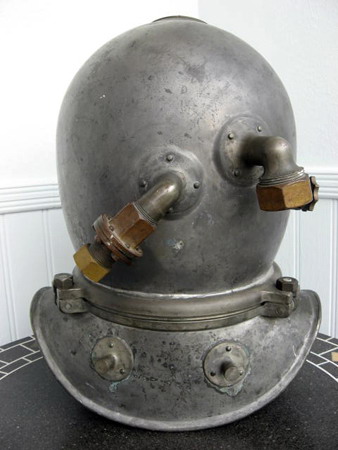
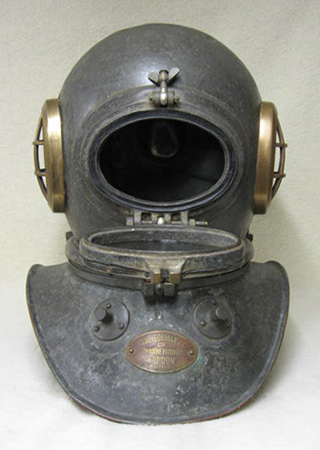
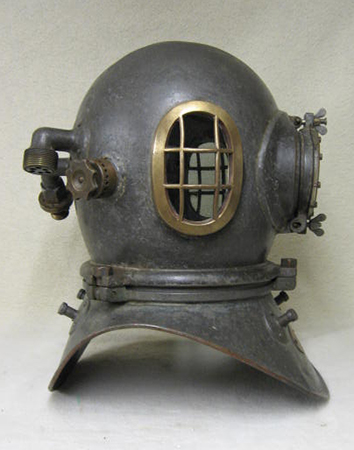
The left side pictures shows the front port open, the hinge being on the bottom. The side view shows the exhaust valve, telephone elbow and the air inlet gooseneck.
This style of exhaust valve is for regulating by hand. The style of this valve has been designed for use with helmets fitted with a telephone.
When receiving a message, the diver presses the spindle which passes through the cap of the valve.
This holds the valve on its seat and stops the noise caused by vibration and by the air escaping into the water.
Generally this is the valve pattern supplied to the British Admiralty.
Photo
courtesy of the Clint Green Collection
